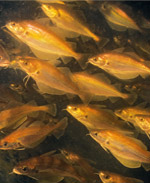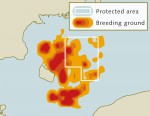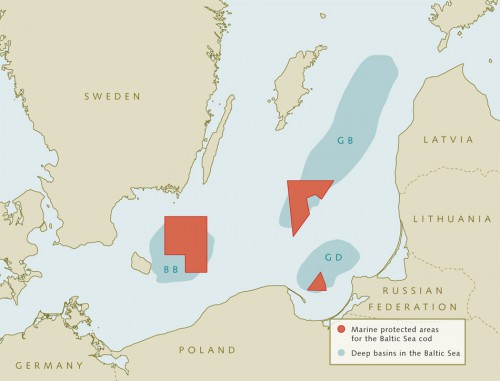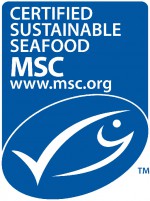
Toward more sustainable fisheries
Tangible scope for improvement
In view of the weaknesses described, a reform of the existing approach to fisheries management is urgently needed. It would be sensible to start by applying the classic instruments used to regulate catches far more consistently and enforce them more effectively. It must be borne in mind, in this context, that a quota can only be effective if it is set at a sufficiently stringent level. In addition to better quota regimes, instruments such as the establishment of marine protected areas and certification of sustainable fisheries can also contribute to sustainable fisheries management.
Marine protected areas – havens for endangered species
Marine protected areas are geographically defined areas of the sea in which all or some economic activities – especially fishing – are prohibited. Closing off these areas helps to conserve marine ecosystems, especially by protecting endangered species or unique habitats such as coral reefs. Since 2004, for example, the North East Atlantic Fisheries Commission (NEAFC) has banned the use of bottom trawls in some areas in order to protect cold-water corals. Various studies have shown that marine protected areas can help to support the recovery of fish stocks. One advantage of protected areas is that they are relatively easy to establish and monitor. Satellite-based location and electronic logbook systems, known as Vessel Detection Systems (VDS) and Vessel Monitoring Systems (VMS), enable the routes taken by industrial fishing vessels to be tracked. However, one problem is defining the right size for the protected area. If the protected area is too small, its effect will be limited, as fish will migrate out of the protected area and will be caught elsewhere. And indeed, a higher level of fishing activity has been observed on the periphery of existing protected areas compared with elsewhere. If it is too large, however, the stock may recover within the protected area, but this does not benefit the fishery, which has no access to these increased fish stocks. It would seem that areas providing refuge for juveniles are most suitable as protected areas for the purpose of fisheries management. Heavily overfished maritime regions, where very few fish can be caught in any case, may also be suitable for designation as marine protected areas. However, the refuge areas used by the juveniles of various species are often distributed across many different maritime regions, so a single protected area may not always help to protect several species at once.
The difficult quest for the right protected area – the case of the Baltic Sea cod
It is extremely difficult to determine exactly which region is the right one in which to establish a marine protected area, as the example of the Baltic Sea cod clearly illustrates. As a result of severe overfishing and unfavourable environmental conditions such as oxygen depletion in the deep water, stocks of Baltic Sea cod massively declined in the 1980s, falling to around one-seventh of their former levels within just a few years. Despite some recovery in recent years, stocks are still well below a level that would permit harvesting at maximum sustainable yield (MSY).
 6.16 > In order to promote the recovery of cod, protected areas were established in the deep basins of the Baltic Sea (red). In the case of the Bornholm Basin (BB), however, the survival rate of the brood of the Baltic Sea cod (shown in orange above) proved to be highest outside the protected area.
6.16 > In order to promote the recovery of cod, protected areas were established in the deep basins of the Baltic Sea (red). In the case of the Bornholm Basin (BB), however, the survival rate of the brood of the Baltic Sea cod (shown in orange above) proved to be highest outside the protected area.
- In order to constrain the fishing of spawning populations and stabilize the radically depleted stock, fishing bans were imposed in some areas of the Baltic Sea. The Bornholm Basin (BB) is particularly important for the continued existence of the Baltic Sea cod, as the survival rate of eggs and larvae in the more easterly spawning grounds such as the Gotland Basin (GB) and the Gdansk Basin (GD) is relatively low due to the often poor oxygen conditions here. The fishing ban area in the Bornholm Basin was first established for the period from May to August 1995. Despite the progressive expansion of the protected area in subsequent years, however, no significant stock improvement was observed. The reason for this is that, although the protected area is located in an area of the sea with high spawning activity, current studies show that there are spatial differences in mortality. The highest survival rates of larvae and juveniles are, it seems, found on the margins of the Bornholm Basin, i.e. outside the current protected area. This study suggests that the wrong location may possibly have been chosen for the protected area. As a consequence, the areas that are important for the survival of the species are inadequately protected, and there is even a risk that the protected area has a counterproductive effect, as fishing activity is now shifting to the major spawning grounds. Despite these setbacks, however, protected areas are an important building block for the conservation or recovery of a stock. However, the example also shows that the establishment of protected areas is only really beneficial if it is based on adequate ecological and economic data.
 6.18 > The Marine Stewardship Council was established by the nature conservation organization WWF and the food corporation Unilever in 1997 in order to promote responsible fishing.
6.18 > The Marine Stewardship Council was established by the nature conservation organization WWF and the food corporation Unilever in 1997 in order to promote responsible fishing.Certification of sustainable fisheries
The complex economic interactions between the various influencing factors, such as consumer demand for different species of fish, are often still not considered in conventional fisheries management. For this reason, non-governmental organizations and some initiatives supported by the private sector are opting for a different solution. Their aim is to influence consumer demand by means of information campaigns and the certification of sustainable fishery products with a view toward reducing demand for overexploited species, and encouraging consumers to choose products from sustainable fisheries instead. The idea is to encourage producers, over the long term, to respond to this shift in consumer demand and switch to more sustainable methods of production. Certification is therefore conditional upon fulfilment of specific production criteria, such as a commitment to refrain from fishing endangered stocks and from deploying destructive fishing techniques that have attracted particular criticism, such as the use of beam trawls, which destroy seabed habitats. Two of the best-known movements are the Marine Stewardship Council and the Friend of the Sea initiative. The Marine Stewardship Council (MSC) was founded in 1997 by an environmental organization and an international food corporation, and has operated on an independent basis since 1999. The Friend of the Sea initiative was also established by an environmental organization and is notable for the fact that it certifies aquaculture products as well. Critics of these certification schemes complain about the often inadequate ecological criteria established for certified fishery products. A further point of contention is to what extent demand for certified fish is genuinely replacing the demand for conventionally caught fish, or whether it is in fact generating additional demand for fishery products. Overall, then, demand-oriented approaches may be a good way of enhancing sound fisheries management, but are not an sufficient solution on their own to guarantee sustainable fisheries.